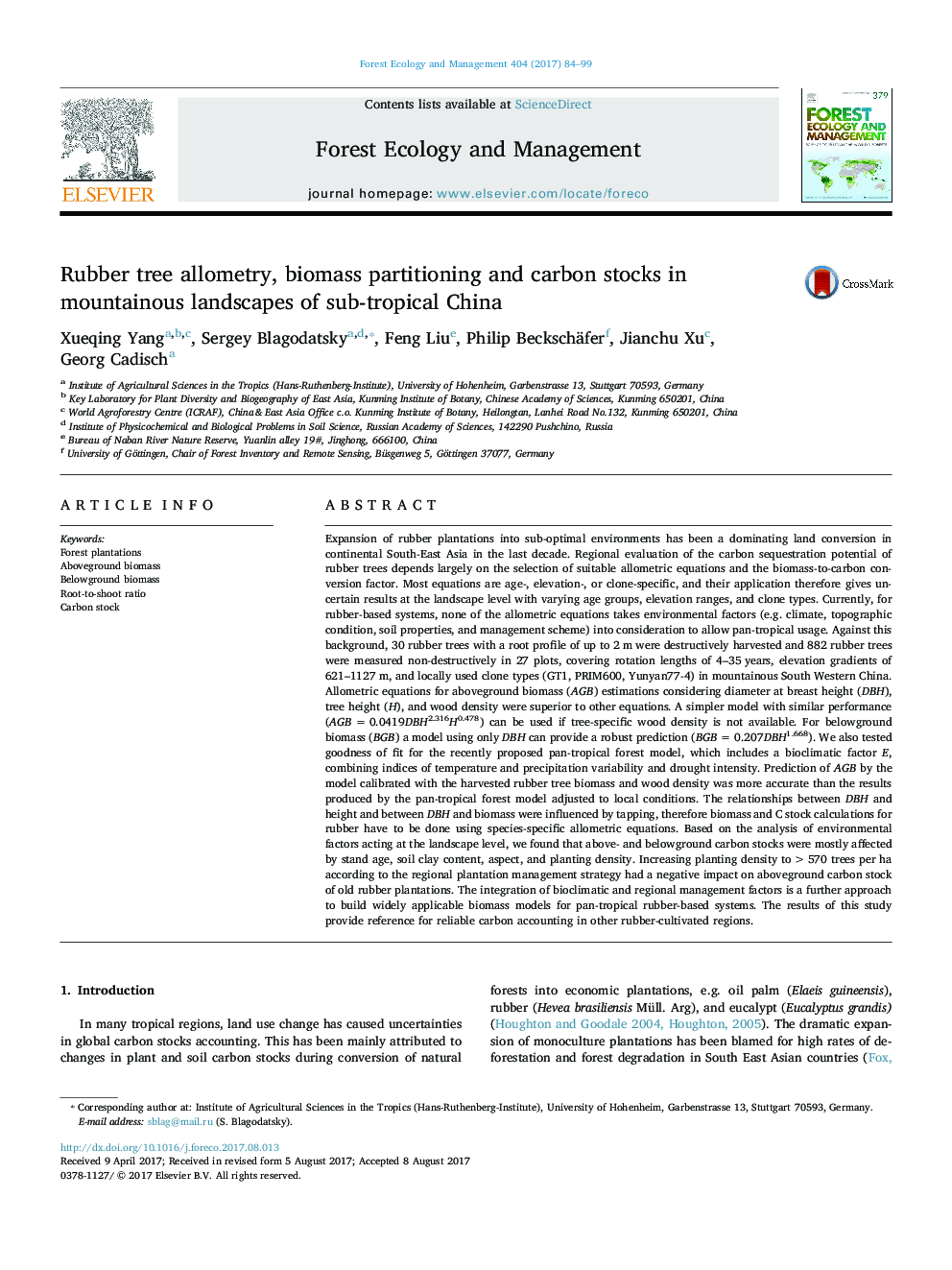| کد مقاله | کد نشریه | سال انتشار | مقاله انگلیسی | نسخه تمام متن |
|---|---|---|---|---|
| 6459143 | 1421354 | 2017 | 16 صفحه PDF | دانلود رایگان |

- Allometric equations for rubber tree biomass were developed.
- Below-ground biomass was estimated through two-meter depth rooting profile.
- Carbon stock in mountainous landscape depends on elevation and soil clay content.
- Planting density posed negative effect on carbon in old-aged rubber plantations.
- Allometric equation for rubber performed better than pan-tropical equation for forest.
Expansion of rubber plantations into sub-optimal environments has been a dominating land conversion in continental South-East Asia in the last decade. Regional evaluation of the carbon sequestration potential of rubber trees depends largely on the selection of suitable allometric equations and the biomass-to-carbon conversion factor. Most equations are age-, elevation-, or clone-specific, and their application therefore gives uncertain results at the landscape level with varying age groups, elevation ranges, and clone types. Currently, for rubber-based systems, none of the allometric equations takes environmental factors (e.g. climate, topographic condition, soil properties, and management scheme) into consideration to allow pan-tropical usage. Against this background, 30 rubber trees with a root profile of up to 2Â m were destructively harvested and 882 rubber trees were measured non-destructively in 27 plots, covering rotation lengths of 4-35Â years, elevation gradients of 621-1127Â m, and locally used clone types (GT1, PRIM600, Yunyan77-4) in mountainous South Western China. Allometric equations for aboveground biomass (AGB) estimations considering diameter at breast height (DBH), tree height (H), and wood density were superior to other equations. A simpler model with similar performance (AGBÂ =Â 0.0419DBH2.316H0.478) can be used if tree-specific wood density is not available. For belowground biomass (BGB) a model using only DBH can provide a robust prediction (BGBÂ =Â 0.207DBH1.668). We also tested goodness of fit for the recently proposed pan-tropical forest model, which includes a bioclimatic factor E, combining indices of temperature and precipitation variability and drought intensity. Prediction of AGB by the model calibrated with the harvested rubber tree biomass and wood density was more accurate than the results produced by the pan-tropical forest model adjusted to local conditions. The relationships between DBH and height and between DBH and biomass were influenced by tapping, therefore biomass and C stock calculations for rubber have to be done using species-specific allometric equations. Based on the analysis of environmental factors acting at the landscape level, we found that above- and belowground carbon stocks were mostly affected by stand age, soil clay content, aspect, and planting density. Increasing planting density to >570 trees per ha according to the regional plantation management strategy had a negative impact on aboveground carbon stock of old rubber plantations. The integration of bioclimatic and regional management factors is a further approach to build widely applicable biomass models for pan-tropical rubber-based systems. The results of this study provide reference for reliable carbon accounting in other rubber-cultivated regions.
182
Journal: Forest Ecology and Management - Volume 404, 15 November 2017, Pages 84-99